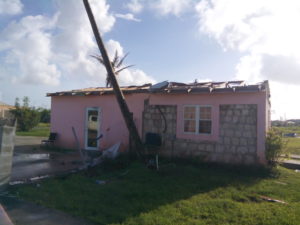A slow post-hurricane recovery continues for Barbuda
In the early morning hours of September 5th, Hurricane Irma passed directly over Barbuda, a small island in the eastern Caribbean. The Category 5 storm damaged 95% of the island’s structures and a two-year-old boy was killed.
The island was left littered with debris.
Just days later, the threat of incoming Hurricane Jose pushed the Prime Minister of the Commonwealth of Antigua and Barbuda, Gaston Browne, to initiate an island-wide mandatory evacuation. Most of the population was brought to Antigua, which was relatively undamaged by Irma. Although Jose did not significantly impact Barbuda, Browne, citing vermin and water-borne illnesses, decided the island was temporarily uninhabitable. The mandatory evacuation was kept for an additional three weeks. For the first time in centuries, the island was unpopulated, leaving abandoned livestock and pets to roam the streets.

Almost three months after Irma, the island remained virtually lifeless. By November 24, most homes had yet to regain water and power. Only around 100 residents had returned, and funding for reconstruction remained limited. Unlike other hard-hit islands, Barbuda and Antigua are not territories of larger nations, who often help with relief efforts. Additionally, the Commonwealth boasts a higher per-capita income, which could decrease the perceived need for aid from an outside point of view and renders them ineligible for financing from the International Development Fund.
During a CARICOM-UN Conference on November 21st, over USD $2 billion was pledged by civil society organizations, governments, and representatives from the private sector. Barbuda, although suffering some of the worst damage and requiring roughly $220 million to recover, will receive relatively little of the aid. Around $1 billion of the funding comes in the form of loans from the Inter-American Development Bank, of which Antigua and Barbuda are not members of and therefore not eligible to receive, and an additional $700 million was pledged by the Netherlands, the majority of which will go to its own overseas territories. Of the $450 million remaining, it is estimated that Barbuda will receive 7% for its own relief effort.
Despite the lack of aid from larger key nations, hurricane hit islands have come together to help cope with the devastating hurricane season. Dominica, another small Caribbean island, pledged $250,000 to Barbuda after Hurricane Jose destroyed much of the island. A few weeks later, Dominca itself was struck by Hurricane Maria. Antigua and Barbuda gave $300,000 to Dominca’s relief efforts, despite their own extensive damage. “Even among countries that were devastated, there is a form of human cooperation to help each other,” stated Prime Minister Browne.
If Barbuda is to recover, it needs to be repopulated. In spite of the devastation and prolonged recovery process, Barbudans still have hope. Maurice George, a high school teacher on Barbuda, fled his father’s house when the hurricane started to rip the roof off. Despite being heart-broken by the sight of the destroyed island, he noted, “Where some people see devastation, I see an opportunity to rebuild.”
Suggested Reading
What it’s like in Barbuda, the island ripped apart by Irma and forgotten by the world– The Independent
For first time in 300 years, no one is living on Barbuda – CNN
Recovery pledges for hurricane-ravaged Caribbean are a drop in the ocean – IRIN
Barbuda PM calls for help from Britain to rebuild island devastated by hurricane – The Guardian
The night Barbuda died: how Hurricane Irma created a Caribbean ghost town – The Guardian
Small slice of donor pie for Barbuda – PM Browne – The Observer
